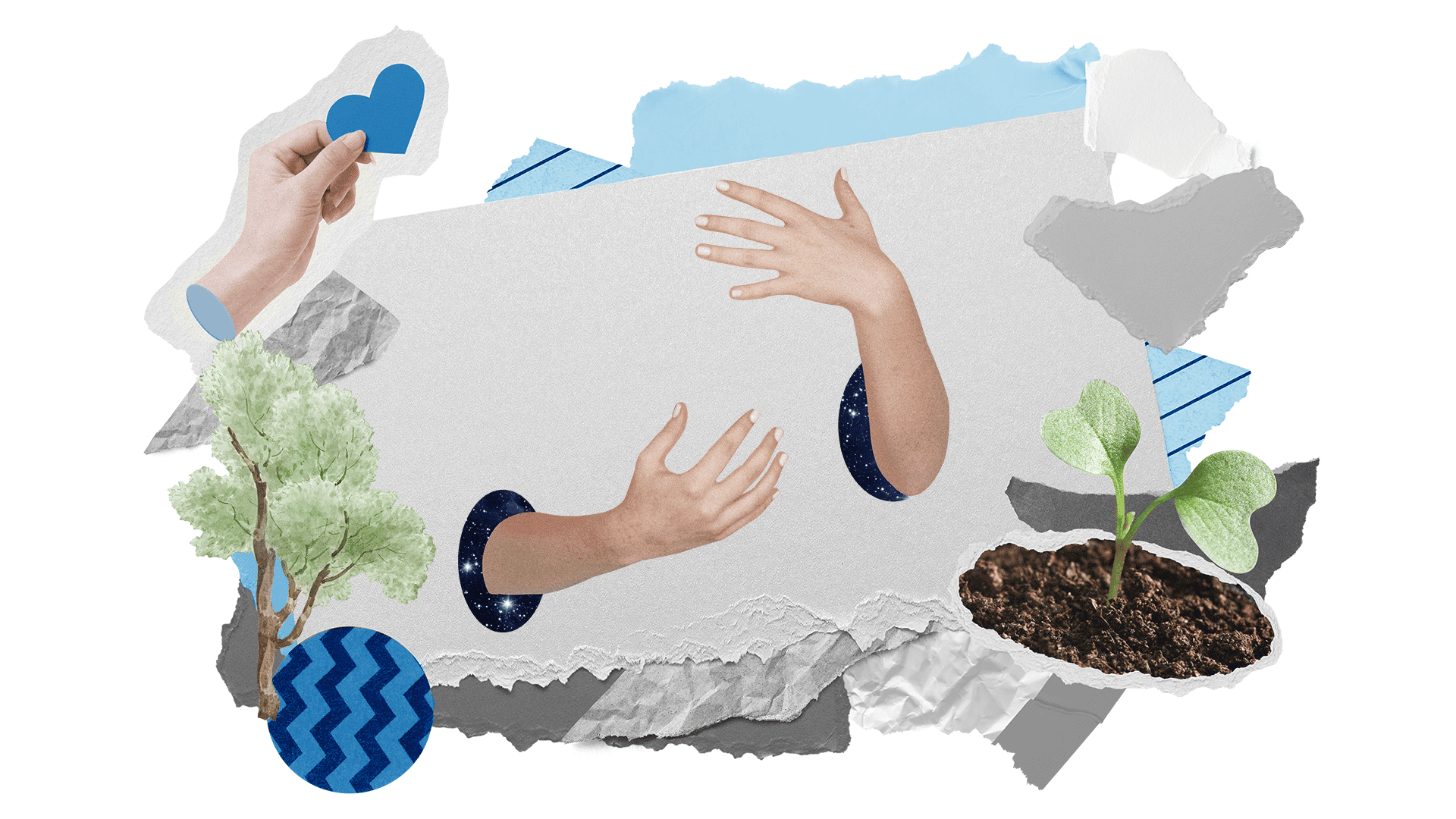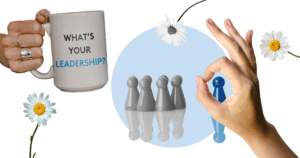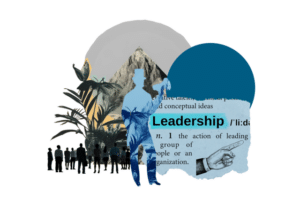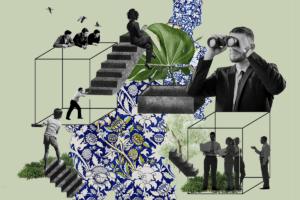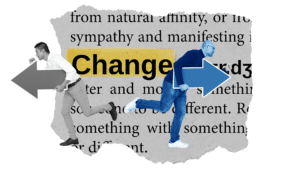It is common knowledge by now that emotions play a crucial role in the results we can achieve at work. However, still, in many organizational settings, people struggle to deal with this slippery, complex, and, at times, misunderstood topic.
What are emotions? What is their origin and how can we take action on our own and each other’s feelings?
When we talk about emotions, we enter a territory of a body-mind relationship. Emotions are influenced by the social context where we act and by our interpretation of situations and our surroundings. Our thoughts influence emotional feelings and vice versa. In particular, emotions related to the green shift are emotions that arise in the space between the individual and the world, stimulated by the interpretation of what is happening concerning issues transforming the environment.
Without a doubt, emotions are a powerful force, of levers that propel us to action, but, on the other hand, they can slow us down to a halt. In short, emotiveness plays a crucial role in everyday life, including work life: motivation, collaborative leanings, and different forms of engagement are key to purposeful work.
Therefore, knowing how to manage and influence emotions, our own as of others, is a crucial skill for a leader now more than ever.
What is the Green Shift?
The search for a more respectful way of organizational action towards the environment and society at large are actions that fall under the broader concept of sustainability.
Specifically, by the term green shift, we refer to the transition that leads companies and organizations toward an increasingly eco-sustainable dimension. In this respect, the United Nations’ Agenda 2030 is an influential guide, for instance. It is a pact, established amongst 197 countries, through which the desired evolution of Planet Earth is described through 17 development goals.
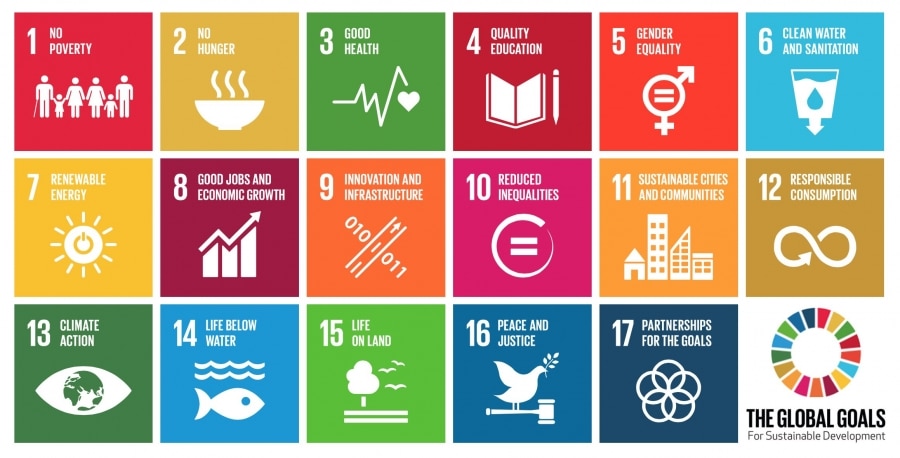
However, the transition to a green economy is not just a UN initiative. In 2020, the European Union created its own Green Deal intending to generate no more net greenhouse gas emissions by 2050, through economic growth decoupled from resource use without, at the same time, neglecting any person or place within the EU, during the transformation process.
The EU is not only impacting with new policies and regulations through the Green Deal, but it is also investing a massive package of funding into this transformation. One-third of the €1800 billion investment in the recovery plan envisioned by NextGenerationEU and the EU’s seven-year budget will fund the European Green Deal. Ursula Von der Leyen calls Green Deal Europe’s “Man on the moon“, thus understanding the Green Deal as an opportunity for Europe to show itself as an innovator, capable of tackling the environmental challenge constructively from all angles.
Companies are thus being pushed towards the Green Shift, whether it is of direct interest to them or not. Each EU nation then certainly has its programs and new regulations that are emerging.
Yet the Green Shift is not just a mix of policy, regulation, and financing. As far as companies are concerned, increasingly the call to act sustainably comes directly from customers and employees as well as investors and shareholders.
Companies that can embrace transformation quickly are those that will also have a leg up in becoming or remaining market leaders. Whether at the individual level we endorse this transition or not, as leaders within organizations, we need to take note.
Behaviors are the basis of our actions
But what does it mean to act sustainably?
For many organizations, it’s the first of all issue of knowledge. Practical obstacles emerge: what does it mean to act sustainably within our organizational context? If we are not directly involved in agriculture, energy, or the environmental sector, what can we do?
For some time now, most companies have been implementing small changes in their daily routines.
Once we are already sorting in the office, we have opted to use recycled paper, print the minimum, and use plates and cutlery made of biodegradable materials. But what more can we do? Because of the Corona Virus period, we have learned to work remotely, which means less CO2 because of reduced transitions between home and office, rather than greatly reduced unnecessary business travel. Do we need to go to Paris for that meeting or can we do it in a call as well?
In reality, as Cristina Nava says in her article “The change in gear towards a radiating sustainability“, eco-sustainability in the workplace becomes a driving force that overflows from the company, reaching into the private sphere, translating into everyday sustainable behaviors that people apply in all life situations.
Before disposing, whether at home or in the office, the question to ask oneself is, “Could this thing be reused in some way?” For example, one can always turn off the lights, air conditioning, or heating whenever possible. Whenever possible we can opt for the least polluting mode of transportation. This is a mind-shift in which we think circularly, keeping the focus on the here and now but also on the future. If we do this today what will the cost of our actions be in the future?

Hot topic
So what do emotions have to do with all this? As mentioned, previously the green shift falls under the broader concept of sustainability and ESG (Environmental, Social, and Governance) goals of which diversity inclusion is also a part.
In common, Green Shift and D&I have the knowledge that our relationship with these topics is personal and connected to our value world, the upbringing we received in our families, the culture where we grew up, and the generation we are part of.
For example, the topic of gender equality is very sensitive because it enters into an intimate dimension of interpretation about what it means to be a man or a woman and how we should behave because of this. However, we are not always aware that we are being influenced by such drives. We are of course talking about so-called BIAS.
A practical example of BIAS related to gender exclusion is questioning a woman’s ability to work effectively even after she has had a child.
Sometimes women even fall out of their roles when they become mothers. Underlying this phenomenon is the belief that women who have children struggle (necessarily) to manage work-life balance. And so, in fact, it can happen. Traditionally, women have had a more involved role in childcare, and this has sometimes caused problems at work as well.
These days and with young partners, however, the interpretation of what a woman’s or man’s duty is changing.
However, the BIAS are useful to us because our brains are often exposed to more information than they can handle: by creating conceptual clusters, we can make decisions faster. The BIAS only becomes an obstacle at times when they push us toward unfounded prejudices.
So what are climate BIAS and what do they have to do with organizational contexts? The climate BIASes are closely related to our relationship with climate change and environmental transformation and how we interpret it. This often spills over into extremely intimate dimensions such as one’s identity: whether we consider ourselves to be an environmentally sensitive person or not, or in connection with our political stance.
So our relationship to climate change and environmental issues is related to how we read society and the world in general and therefore our profession to welcome or deny the green shift is a highly personal matter.
Organizations are populated by people who each relate individually to environmental issues. At the extremes, we have those who fear climate change and become unrestrained activists to stop the pace of things, rather than climate deniers who claim that all climate warming is just a media campaign, an invention either of corporations or corrupt politicians. In between are all the others who are often simply busy with something else and fail to engage with the issue while recognizing the importance of the topic.
When the Green Shift becomes the subject of discussion, a hotchpotch of emotions emerges at this point because we are certain of many different kinds and opinions on this front.
The emotions of the green shift
Emotions are universal, part of all humans and all cultures, but the causes of emotional feelings are personal and contextual. What is a source of shame in one culture may be an issue of pride in a different context. What is a source of irritation for someone, for another may be a cause of aberration.
The Green Shift encapsulates a range of emotions related to climate change and the transformation of our environment. Environmental anxiety is one of the most common ones that have long been discussed. It is a state of mind that emerges from a deep concern about what is to come, and how things are going. Studies, such as one conducted by Deloitte, show that especially younger generations under 30 are generally more sensitive to environmental issues than previous generations.
The process of accepting climate change for so many can be an actual grieving process. The Kübler Ross model defines the stages of grieving and processing severe grief (whether due to the loss of a loved one, through a divorce or other loss event) with the steps of Denial, Anger, Bargaining, Depression, and Acceptance.
A profound feeling about the climate crisis means experiencing an existential crisis both from an individual level as well as mourning for where the world is going.
Quite different, on the other hand, is the environmental irritation that emerges from feeling deeply annoyed by everything related to climate change. It could mean that the subject feels emotions such as anger, animosity, contempt, indifference, and aversion.
These emotions are undoubtedly activated in people who do not feel the ecological issue as one of urgency and importance.
Another typical range of emotions revolving around the green shift is emotions like love for the environment or passion for the evolution of a new business scenario. These quickly arise at times in people who see the Green Shift as a huge opportunity to invent the new, who get excited about big challenges, and who lights up at the idea that they can take action to change the status quo. In Matt Damon’s words in the documentary “Brave Blue World: Racing to solve our water crisis“: “Like how lucky are we that we are the ones who get to solve this. In 100 years people wish they could have the possibility of solving a problem this big!”
Working with environmental emotions
To work with the emotional dimension, we must first and foremost recognize both its enormous influence on our actions and value its potential. It matters, first and foremost, to become aware of our own emotions.
Before focusing on others, the leader needs to gain clarity about how she/he feels about this issue, what emotions engage him/her and what they make him/her do. Emotional awareness creates space for listening to ourselves and how we feel and for accepting the emotions we feel, whatever they may be.
At a collective level, this becomes critical to creating a protected space to talk about emotions. Free and respectful dialogue, where no one is judged for what they feel and say is the space both to increase people’s awareness of what is going on in them both as individuals and as a collective.
However, dialogue is also where emotions can be processed, for in respectful and nonjudgmental reflection they tend to change both in shape and size: anger may diminish and perhaps turn into acceptance, and sadness may become hope.
It is up to the leader to create these opportunities to exchange and reflect and grasp the green shift as a great opportunity to do better and generate excellent results, not as a constraint that is imposed from outside.
